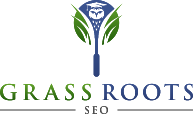Keys to successful writing for the web
Understanding that content and written articles meant for business print does not invariably render suitably to the online universe of effective writing for the web. The rules that work on writing organic web content for online business websites are different than those for business text articles; excellent content created off-line does not consequently measure up to quality natural web copy for the small business website.
Three keys for writing successful natural web copy:
1. Be brief. Because most web readers skim through pages, write less content. Independent research has shown that many readers prefer to scan an article before reading it thoroughly. Keep your organic web content short, less than 500 words; this may allow more people to read the complete web content, perhaps resulting in more returning visitors to your business website. Include only the most vital points or calls to action that you want to make; text is more difficult to read online, so keep it short and sweet.
2. Make the most of headings and lists. People are willing to scan natural web copy and web articles instead of reading them verbatim from the first word to the last. Produce content that is easy for the visitor to find what they’re looking for by using headings, bold type, and lists. Understandable cleanly written lists makes it easier to skim through web content and let them read only what they are truly interested in.
3. Create clear “calls to action’ and links. One of the main tools that breeds successful writing for the web is to take advantage of the reality that print writers don’t have is the ability to link to other applicable sources. Organic web content such as text or images; can be linked to other web pages, photos, videos, sounds, and other significant natural web copy. Make your links stand out by making them obvious. A universal way to highlight a text link is by using a different color from the standard text and by providing a hover effect, such as underlining the link and changing it’s color, when the reader’s place their cursor over the highlighted link.
Using the steps highlighted above and including links to resource pages, news articles, audio and video, forums, and white papers helps develop meaningful natural web copy. Your website visitors can decide which links to follow and which links to skip using your web article as their basis of information on that specific topic. When successfully writing for the web, your readers should feel that reading your organic web content enhanced their reading experience!

A seasoned digital marketing professional with over 20 years of expertise in digital marketing, search engine optimization, search engine marketing, brand development, conversion optimization, lead generation, web development and data analytics. He is a strategic digital marketing thought leader in a multitude of business verticals including automotive, education, financial services, legal marketing and professional services.
